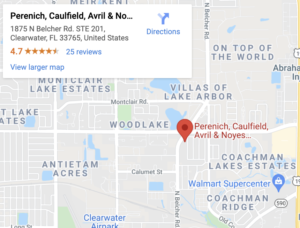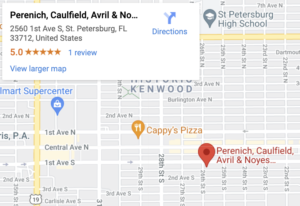
Many people think of a personal injury claim as simple compensation for medical bills. In reality, medical bills are only the beginning of a personal injury claim. You can also pursue compensation for the pain and suffering your injuries caused you, among other types of compensation.
In fact, pain and suffering compensation is often the largest component of a personal injury claim. Because pain and suffering are intangible, calculating money damages can get tricky.
Table of Contents
The Two Calculation Methods for Pain and Suffering Damages
The two most popular methods of calculating pain and suffering damages are the per diem method and the multiplier method.
The “Per Diem” Formula

“Per diem” is a fancy Latin legal term that simply means “per day.” Under the per diem method, you agree on a per-day amount of pain and suffering compensation, and then you multiply that amount by the number of days you suffered. The product equals the amount of your pain and suffering compensation.
The Multiplier Method
Using the multiplier method, you select a particular multiplier, typically between 1.5 and 5, and multiply that number by your medical expenses or your total economic damages.
The Nuts and Bolts of a Pain and Suffering Claim
The three dimensions of a pain and suffering claim are (i) duration, (ii) severity, and (iii) life impact. It is a good idea to break it down further to reveal the magnitude of your suffering.
You might break down the pain and suffering resulting from a motorcycle accident like this, for example:
- The initial fear, shock, and horror of the accident.
- The immediate pain after the crash–before anesthesia could be applied, You might describe what “road rash” is.
- The weeks of pain and physical therapy after the crash.
- Multiple surgeries.
- The time it took to recover from surgery, including time at the hospital and time home in bed.
- Estimated future pain if your injuries are permanent. If the pain is lifelong, the younger you are, the more compensation you will receive.
You can use all of these factors together to increase the per diem rate or the multiplier value.
Some Conditions Are More Painful Than Others
Even with injuries of the same severity in terms of the extent of the medical treatment you need, the length of the convalescence period, and the threat to your life, some conditions are more painful than others. Some of the most painful medical conditions generated by accidents include:
- Second-and third-degree burns, especially if they cover a large area of your body;
- Road rash, when your body slides along the pavement during a motorcycle accident;
- Broken bones, especially the ribs (every breath hurts);
- Slipped discs, resulting in back pain; and
- Post-surgical pain.
Some painful conditions, such as soft tissue injuries in the neck, can be difficult to prove.
Future Pain and Suffering
If you suffered a permanent injury, you might be facing a lifetime of pain and suffering. Many back injuries are like this. If you anticipate future pain and suffering, you must claim compensation now. You cannot ask for more money later if you wait until your settlement is finalized or the jury reaches a verdict. Your case will be forever closed.
There are two unique problems associated with claiming future pain and suffering:
- Pain and suffering are inherently intangible and difficult to quantify. Yet you must ask for a specific dollar amount.
- Future damages are inherently speculative. They can be hard to estimate and hard to prove. You will probably need an expert witness to testify on your behalf.
Because of the twin difficulties of asserting a future pain and suffering claim, there is no substitute for the help of an experienced personal injury lawyer.
When Pain and Suffering Damages Are Not Available
Pain and suffering damages are generally not available in Florida for workplace accident claims or car accident claims.
Workplace Accident Claims
Workers’ compensation claims are designed to compensate for work-related injuries. These claims do not go to court. Instead, the Florida Division of Workers’ Compensation will rule on your claim. You cannot claim damages for pain and suffering unless you can find a third party whose misconduct caused your accident. You can exit the workers’ compensation system, sue the defendant, and pursue pain and suffering compensation if that happens.
Almost All Florida Car Accident Claims are No-Fault
Florida is a “no-fault” auto insurance state, at least for now. Consequently, Florida motorists must carry Personal Injury Protection (PIP) insurance that covers them regardless of fault. Unless your injuries are “serious” (as defined by Florida law), you must take all of your compensation from your own PIP insurance. The mandatory minimum amount of PIP coverage tops out at only $10,000.
Only if your injuries qualify as “serious” can you sue the at-fault driver for a car accident. The problem is that Florida doesn’t require its motorists to carry bodily injury liability insurance. Most motorists don’t, and most motorists can’t afford to pay a large verdict or settlement out of their own pocket. Florida might change this system soon.
When Pain and Suffering Damages Are Limited
There are two circumstances when Florida might limit pain and suffering damages – –medical malpractice claims and comparative fault claims.
Medical Malpractice Claims
Florida limits non-economic damages, including damages for pain and suffering, to a maximum of $750,000 in medical malpractice cases. This won’t affect most injury victims because most victims do not seek such large amounts of non-economic damages anyway.
Comparative Fault Claims
Florida’s modified comparative fault system applies when the victim is partly at fault. When this happens, a Florida court will assign a percentage of fault to each party. The court will then subtract from your damages an amount that equals your percentage of fault — 25%, for example. Under Florida law, you also cannot recover compensation if this percentage reaches 51% or more. You will also have to pay an equivalent percentage of any damages suffered by the at-fault party. This amount will come out of all of your damages, including the pain and suffering component.
You Can Fight Back
You don’t have to suffer silently — you can fight back. The intangible nature of pain and suffering damages renders the help of a personal injury lawyer all that much more important. At Perenich, Caulfield, Avril & Noyes Personal Injury Lawyers, we’re no “new kids on the block”–we’ve been in business since 1955. We have won hundreds of millions of dollars for our clients, and we have been all the way to the US Supreme Court for them. Contact us today for a free consultation.


